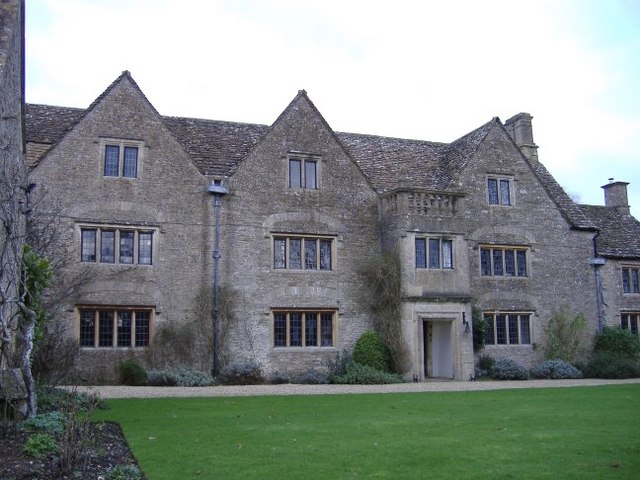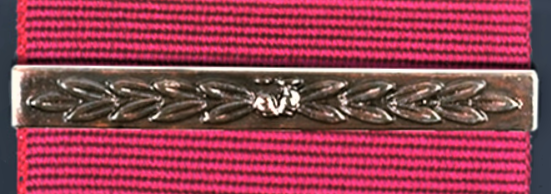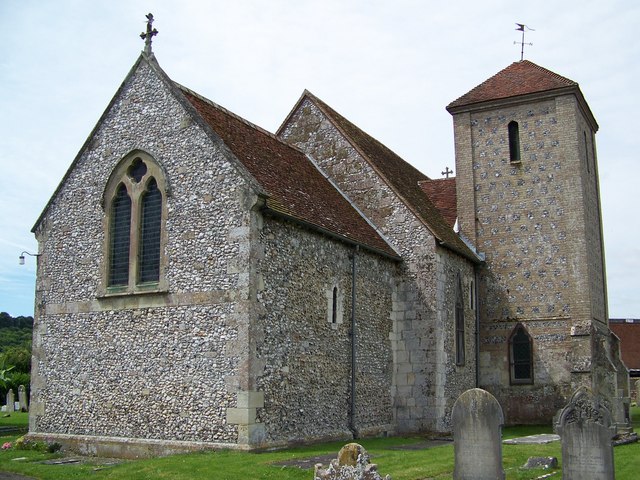|
Salisbury Guildhall
Salisbury Guildhall is an 18th-century municipal building in the Market Place, Salisbury, England. The building, which is the meeting place of the Salisbury City Council, is a Grade II* listed building. History The first guildhall, known as the "Bishop's Guildhall", was built on the initiative of the Bishop of Salisbury, Simon of Ghent, in around 1314. It was so-called because this was the place where the bishop would exercise his feudal rights. A second building, known as the "Council House" was built by the Merchants Guild to the north of the original building in 1585. After the Council House was burnt down in a fire at a banquet, it was rebuilt, with a gift from Jacob Pleydell-Bouverie, 2nd Earl of Radnor, in 1780. In 1785 the bishop gave up his rights as clerk of the market and in return was released from his obligations to maintain the guildhall. This enabled the old Bishop's Guildhall, which had become dilapidated, to be demolished. The current building, which was desig ... [...More Info...] [...Related Items...] OR: [Wikipedia] [Google] [Baidu] |
Salisbury
Salisbury ( ) is a cathedral city in Wiltshire, England with a population of 41,820, at the confluence of the rivers Avon, Nadder and Bourne. The city is approximately from Southampton and from Bath. Salisbury is in the southeast of Wiltshire, near the edge of Salisbury Plain. Salisbury Cathedral was formerly north of the city at Old Sarum. The cathedral was relocated and a settlement grew up around it, which received a city charter in 1227 as . This continued to be its official name until 2009, when Salisbury City Council was established. Salisbury railway station is an interchange between the West of England Main Line and the Wessex Main Line. Stonehenge is a UNESCO World Heritage Site and is northwest of Salisbury. Name The name ''Salisbury'', which is first recorded around the year 900 as ''Searoburg'' ( dative ''Searobyrig''), is a partial translation of the Roman Celtic name ''Sorbiodūnum''. The Brittonic suffix ''-dūnon'', meaning "fortress" (in reference ... [...More Info...] [...Related Items...] OR: [Wikipedia] [Google] [Baidu] |
Camilla, Duchess Of Cornwall
Camilla (born Camilla Rosemary Shand, later Parker Bowles, 17 July 1947) is Queen Consort of the United Kingdom and the 14 other Commonwealth realms as the wife of King Charles III. She became queen consort on 8 September 2022, upon the accession of her husband following the death of his mother, Queen Elizabeth II. Camilla was raised in East Sussex and South Kensington in England and educated in England, Switzerland, and France. In 1973, she married British Army officer Andrew Parker Bowles; they divorced in 1995. Camilla and Charles were romantically involved periodically both before and during each of their first marriages. Their relationship was highly publicised in the media and attracted worldwide scrutiny. In 2005, Camilla married Charles in the Windsor Guildhall, which was followed by a televised Anglican blessing at St George's Chapel in Windsor Castle. From the marriage until her husband's accession in 2022, she was known as the Duchess of Cornwall. Camilla carr ... [...More Info...] [...Related Items...] OR: [Wikipedia] [Google] [Baidu] |
City And Town Halls In Wiltshire
A city is a human settlement of notable size.Goodall, B. (1987) ''The Penguin Dictionary of Human Geography''. London: Penguin.Kuper, A. and Kuper, J., eds (1996) ''The Social Science Encyclopedia''. 2nd edition. London: Routledge. It can be defined as a permanent and densely settled place with administratively defined boundaries whose members work primarily on non-agricultural tasks. Cities generally have extensive systems for housing, transportation, sanitation, utilities, land use, production of goods, and communication. Their density facilitates interaction between people, government organisations and businesses, sometimes benefiting different parties in the process, such as improving efficiency of goods and service distribution. Historically, city-dwellers have been a small proportion of humanity overall, but following two centuries of unprecedented and rapid urbanization, more than half of the world population now lives in cities, which has had profound consequences for g ... [...More Info...] [...Related Items...] OR: [Wikipedia] [Google] [Baidu] |
Grade II* Listed Government Buildings
Grade most commonly refers to: * Grade (education), a measurement of a student's performance * Grade, the number of the year a student has reached in a given educational stage * Grade (slope), the steepness of a slope Grade or grading may also refer to: Music * Grade (music), a formally assessed level of profiency in a musical instrument * Grade (band), punk rock band * Grades (producer), British electronic dance music producer and DJ Science and technology Biology and medicine * Grading (tumors), a measure of the aggressiveness of a tumor in medicine * The Grading of Recommendations Assessment, Development and Evaluation (GRADE) approach * Evolutionary grade, a paraphyletic group of organisms Geology * Graded bedding, a description of the variation in grain size through a bed in a sedimentary rock * Metamorphic grade, an indicatation of the degree of metamorphism of rocks * Ore grade, a measure that describes the concentration of a valuable natural material in the surroun ... [...More Info...] [...Related Items...] OR: [Wikipedia] [Google] [Baidu] |
Grade II* Listed Buildings In Wiltshire
There are over 20,000 Grade II* listed buildings in England. As the county of Wiltshire contains 727 of these sites they have been split into alphabetical order. * Grade II* listed buildings in Wiltshire (A–G) * Grade II* listed buildings in Wiltshire (H–O) * Grade II* listed buildings in Wiltshire (P–Z) See also * Grade I listed buildings in Wiltshire Grade most commonly refers to: * Grade (education), a measurement of a student's performance * Grade, the number of the year a student has reached in a given educational stage * Grade (slope), the steepness of a slope Grade or grading may also ref ... {{DEFAULTSORT:Grade II* listed buildings in Wiltshire} ... [...More Info...] [...Related Items...] OR: [Wikipedia] [Google] [Baidu] |
Georgian Architecture In Wiltshire
Georgian may refer to: Common meanings * Anything related to, or originating from Georgia (country) **Georgians, an indigenous Caucasian ethnic group **Georgian language, a Kartvelian language spoken by Georgians **Georgian scripts, three scripts used to write the language **Georgian (Unicode block), a Unicode block containing the Mkhedruli and Asomtavruli scripts **Georgian cuisine, cooking styles and dishes with origins in the nation of Georgia and prepared by Georgian people around the world * Someone from Georgia (U.S. state) * Georgian era, a period of British history (1714–1837) **Georgian architecture, the set of architectural styles current between 1714 and 1837 Places *Georgian Bay, a bay of Lake Huron *Georgian Cliff, a cliff on Alexander Island, Antarctica Airlines *Georgian Airways, an airline based in Tbilisi, Georgia *Georgian International Airlines, an airline based in Tbilisi, Georgia *Air Georgian, an airline based in Ontario, Canada *Sky Georgia, an airlin ... [...More Info...] [...Related Items...] OR: [Wikipedia] [Google] [Baidu] |
Tom Adlam
Lieutenant-Colonel Tom Edwin Adlam VC (21 October 1893 – 28 May 1975) was an English recipient of the Victoria Cross, the highest and most prestigious award for gallantry in the face of the enemy that can be awarded to British and Commonwealth forces. A soldier with The Bedfordshire Regiment during the First World War, he was awarded the Victoria Cross for his actions on 27 September 1916, during the Battle of the Somme. He later served in the Second World War. Adlam was twenty two years old, and a temporary second lieutenant in the 7th Battalion, The Bedfordshire Regiment, British Army during the First World War when the following deed took place on 27 September 1916 at Thiepval, France, for which he was awarded the Victoria Cross. Major-General (later Lieutenant-General, Sir) Ivor Maxse, commanding 18th (Eastern) Division later wrote that Adlam’s bravery and example and also his skilful handling of his unit was ‘chiefly responsible for the success of the two compa ... [...More Info...] [...Related Items...] OR: [Wikipedia] [Google] [Baidu] |
Victoria Cross
The Victoria Cross (VC) is the highest and most prestigious award of the British honours system. It is awarded for valour "in the presence of the enemy" to members of the British Armed Forces and may be awarded posthumously. It was previously awarded by countries of the Commonwealth of Nations, most of which have established their own honours systems and no longer recommend British honours. It may be awarded to a person of any military rank in any service and to civilians under military command. No civilian has received the award since 1879. Since the first awards were presented by Queen Victoria in 1857, two-thirds of all awards have been personally presented by the British monarch. The investitures are usually held at Buckingham Palace. The VC was introduced on 29 January 1856 by Queen Victoria to honour acts of valour during the Crimean War. Since then, the medal has been awarded 1,358 times to 1,355 individual recipients. Only 15 medals, of which 11 to members of the Britis ... [...More Info...] [...Related Items...] OR: [Wikipedia] [Google] [Baidu] |
Harnham
Harnham is a suburb of the city of Salisbury in Wiltshire, England, centred about south of Salisbury Cathedral and across the River Avon. Harnham is split into the areas of West Harnham and East Harnham. History Early history The area has had human habitation since the Iron Age; a settlement is marked on Ordnance Survey maps underneath several modern houses in Harnwood Road/Old Blandford Road, a straight Roman Road. Middle Ages Until the 19th century formation of urban and rural districts, the area lay within the Cawdon and Cawsworth Hundred of Wiltshire. Road access to the city was improved in 1244 by the building of Ayleswade bridge, in two sections across an island in the Avon, leading traffic from the south through Harnham instead of the older route to the west through Wilton. The old bridge survives inside an outer casing added in the 16th or 17th century. St Nicholas Hospital, sometimes described as being in Harnham, was built earlier than the bridge, just north of ... [...More Info...] [...Related Items...] OR: [Wikipedia] [Google] [Baidu] |
George Cole (artist)
George Cole (15 January 1810 – 7 September 1883) was an English painter known for his landscapes and animal paintings. Cole was born in Portsmouth to James and Elizabeth Cole. His mother died when he was 9 years old. According to the artist's grandson, Rex Vicat Cole, he was apprenticed to a ship's painter in the Royal Navy dockyards at Portsmouth."Cole, George" ''New American Supplement to the Latest Edition of the Encyclopædia Britannica'', ed. Day Otis Kellogg, 5 vols New York / Chicago: Werner, 1897, , Volume 2, p. 860. He taught himself to paint pictures, at first portraits and animals; he also painted posters for Wombwell's menagerie."Cole, George ( ... [...More Info...] [...Related Items...] OR: [Wikipedia] [Google] [Baidu] |
John Seymour, 4th Duke Of Somerset
John Seymour, 4th Duke of Somerset and 3rd Marquess of Hertford (before 164629 April 1675) was an English peer and MP. He was the only surviving son of William Seymour, 2nd Duke of Somerset, and Lady Frances Devereux. In 1656, he married Sarah, daughter and co-heiress of Sir Edward Alston and widow of George Grimston. He was elected Member of Parliament for Marlborough in 1661 and entered Gray's Inn in 1666. He succeeded his nephew as the 4th Duke of Somerset in 1671. He died in 1675, childless, and was buried in Salisbury Cathedral. He was succeeded in the dukedom by his cousin, Francis Seymour. The Marquessate of Hertford became extinct on his death. References 1640s births 1675 deaths 504 __NOTOC__ Year 504 (DIV) was a leap year starting on Thursday (link will display the full calendar) of the Julian calendar. At the time, it was known as the Year of the Consulship of Nicomachus without colleague (or, less frequently, year 1257 ... Members ... [...More Info...] [...Related Items...] OR: [Wikipedia] [Google] [Baidu] |
Peter Lely
Sir Peter Lely (14 September 1618 – 7 December 1680) was a painter of Dutch origin whose career was nearly all spent in England, where he became the dominant portrait painter to the court. Life Lely was born Pieter van der Faes to Dutch parents in Soest in Westphalia, where his father was an officer serving in the armed forces of the Elector of Brandenburg. Lely studied painting in Haarlem, where he may have been apprenticed to Pieter de Grebber. He became a master of the Guild of Saint Luke in Haarlem in 1637. He is reputed to have adopted the surname "Lely" (also occasionally spelled Lilly) from a heraldic lily on the gable of the house where his father was born in The Hague. He arrived in London in around 1643, His early English paintings, mainly mythological or religious scenes, or portraits set in a pastoral landscape, show influences from Anthony van Dyck and the Dutch baroque. Lely's portraits were well received, and he succeeded Anthony van Dyck (who had died ... [...More Info...] [...Related Items...] OR: [Wikipedia] [Google] [Baidu] |






